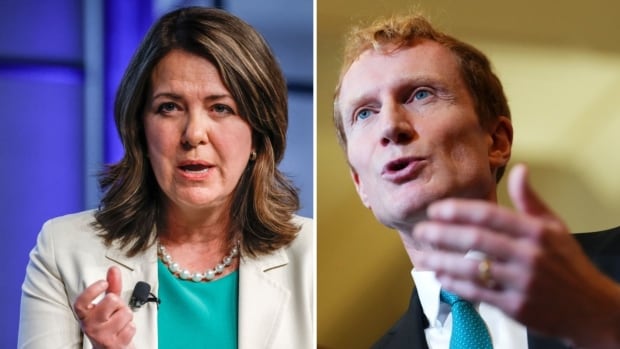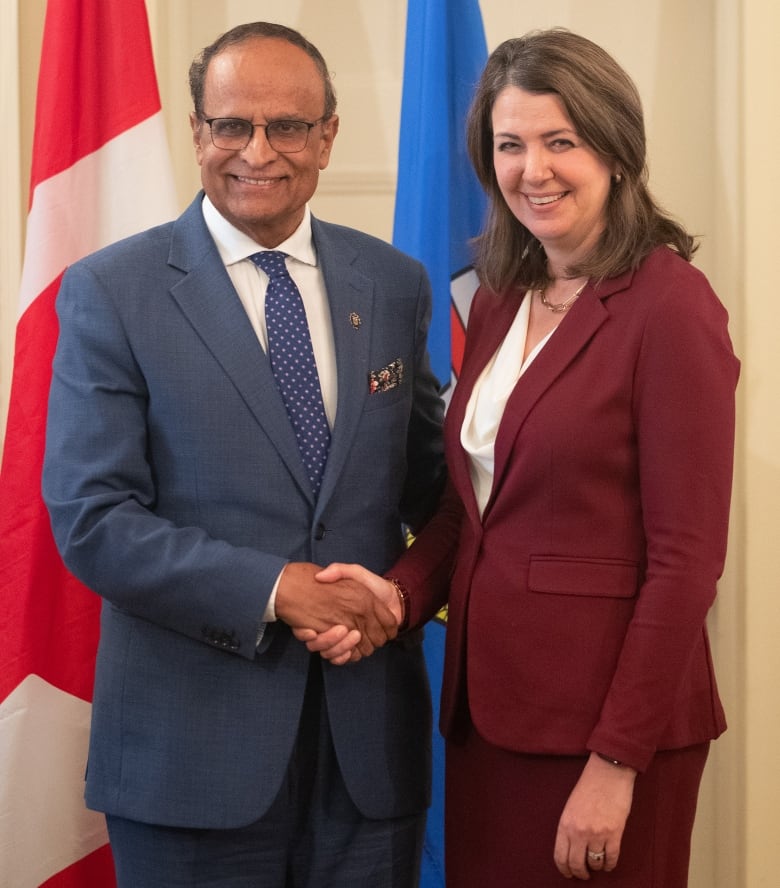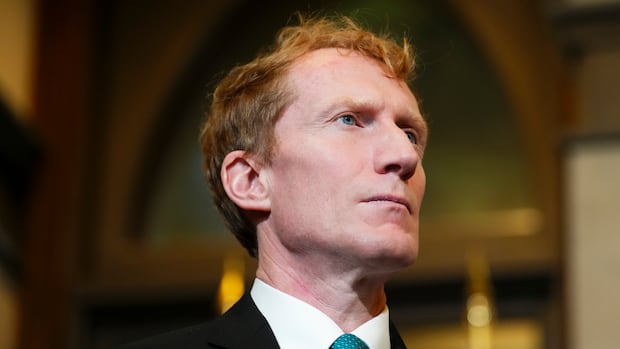
After the federal government said Thursday it would make significant cuts to its immigration levels, Alberta responded that Ottawa’s plan doesn’t go far enough.
Ottawa announced it will will cut the number of new permanent residents from 485,000 projected for this year to 395,000 in 2025, with further cuts down to 380,000 in 2026 and 365,000 in 2027.
It’s a significant amendment to its previous plan, released in November, when Canada was expected to admit about 485,000 permanent residents this year and 500,000 in both 2025 and 2026.
The new strategy sets out to relieve pressures on the housing market and to stabilize population growth across the country, according to federal Immigration Minister Marc Miller.
But in a joint statement from Alberta Premier Danielle Smith and provincial Immigration Minister Muhammad Yaseen, the province called for Ottawa to go further in limiting the number of newcomers to Canada.

“The federal government’s reckless and irresponsible open-border immigration policies, permitting almost two million newcomers to enter Canada last year alone, have led to unsustainable financial pressures on all provinces,” reads the statement sent Thursday afternoon.
“As a province, we need a reprieve from this explosive population growth so we can catch up with these pressures. So do all provinces. The federal government’s plan to cut a mere 105,000 new permanent residents will not solve these pressures when they are bringing in almost two million additional people annually.”
In an email to CBC News, a spokesperson for the province clarified that its two million figure comes from Immigration Refugees Citizenship Canada’s 2023 annual report, and is composed of permanent residents, temporary residents, international students, temporary foreign workers and visitors in the International Mobility Program.
The province says the federal government should reduce the number of temporary foreign workers, international students and asylum seekers but not provincially selected economic migrants.
Population decrease
The federal government’s new immigration plan suggests Canada’s population will decrease by 0.2 per cent over the next two years, a notable shift from last year’s 3.2 per cent increase — the highest annual surge since 1957, according to Statistics Canada.
“The numbers that the federal government put out were quite astounding,” Alicia Planincic, an economist with the Business Council of Alberta, told CBC Radio’s Alberta at Noon.
Planincic says she’s concerned about big swings in either direction in terms of population growth.
“My concern with the announcement today is what’s going to happen is actually temporary residents will now be prioritized for permanent residency,” she told CBC Calgary’s News at 6.
“Now, I worry that we’re going to have a system where we’re prioritizing, you know, the cashier at Tim Hortons over engineers and scientists and people that would bring more value to Alberta’s economy longer term.”
For Planincic, population growth is what sets Alberta’s economy apart from the rest of Canada.
With an increase of 202,324 residents from other provinces and around the world, 2023 was a record-breaking year for population growth in Alberta, which also saw the largest population increase among all other provinces year over year.
While the majority of new Albertans in 2023 came from temporary international residents and immigration, Alberta also broke a national record in 2023 for interprovincial migration, with a net gain of 55,107 people.
Alberta at Noon52:39Alberta’s booming population
This country has been growing quickly, but new, lower immigration targets will change that. How has all that growth changed where you live?
Planincic believes that, moving forward, Alberta’s population growth levels will no longer reach the hundred thousands per year. Instead, she suspects the province could see as little as 30,000 new residents annually over the coming years, and that Alberta will be hit especially hard by Canada’s reduced immigration levels.
Alberta’s population grew by 4.1 per cent to roughly 4.8 million people as of Jan. 1, 2024, and it marked the largest 12-month increase on record, according to Statistics Canada.
Most of that population increase landed in the Calgary census metropolitan area, which had a six per cent population hike that same year, according to the province’s economic dashboard. Edmonton came in second at 4.2 per cent.
Concern for employers
Some say they’re concerned about how employers will fare in the two cities.
Christina Santini, the director of national affairs for the Canadian Federation of Independent Business, says the announcement has small business owners in Alberta — and across Canada — panicked.
“[The immigration plan] will impact both Edmonton and Calgary as their unemployment rates are both above six per cent,” Santini said, adding the cuts to temporary foreign workers will harm businesses, especially in large metropolitan areas.
“We want and we really hope that the government is in a position to be ready to rethink the changes they’ve recently announced, and to turn the dial back up whenever and wherever it is needed.”
Uncertainty for families, international students
Jatin Shory, immigration lawyer and partner at Shory Law LLP, says the reductions to immigration targets don’t come as a surprise.
“I think the Immigration Levels Plan that was announced today was a bit of exciting news because, for the first time, we are getting some insight into what those reductions look like. Not just on the permanent residents side, but also with respect to temporary residents,” said Shory.

“It seems like there’s also going to be a shift — or at least we hope that there’s going to be a shift — toward provinces having more of a say from their provincial nominee programs, because of course provinces have the best, I think, idea of what they need on the ground, on a regular basis.”
As an immigration lawyer, however, Shory expects the announcement to stimulate business for his legal practice. He’s most concerned about the impact Ottawa’s changes will have on families.
“The way the policies have been announced so far seem to suggest that we will see the natural consequence of family separation as a result of these changes that are happening.”

It’s a concern echoed by Saaka Sulemana Saaka, president of the University of Calgary’s Graduate Students’ Association. He expects international students to feel “frustration, shock and uncertainty.”
Sulemana Saaka says many international students in Calgary will be seeking answers to questions spurred by Thursday’s announcement out of Ottawa, adding that over 37 per cent of the university’s graduate student population is made up of international students.
“Canada, over the last several years, has cultivated a reputation for being the most welcoming country in the developed world for graduate students to come and learn, work … and even build lives for themselves and their families,” said Sulemana Saaka.
He added that his association received several emails from international students expressing a wide variety of concerns, from family separation worries to concerns about changes to work hours.
Many questions about the local impact of the new federal plans remain unanswered.
Kelly Ernst, chief program officer with the Centre for Newcomers in Calgary, says he hopes the new cuts to immigration targets won’t mean cuts to funding for settlement organizations.
Ernst says people in Calgary are experiencing long waitlists for resources such as English language classes, which the centre offers. He says the agency’s waitlist is over 7,000, with some waiting up to a year for the classes.
“We have to plan for where [newcomers are] going to end up living. And the greatest number, at this point, are arriving in Canada then living in Western Canada, so we have to plan for that. I’m hoping that the federal government wakes up to that,” said Ernst.
“Reality is, there’s so much secondary migration away from Ontario into other parts of the country that we really have to invest where people end up living.”
WATCH | Federal government announces changes to immigration targets:
Immigration Minister Marc Miller says the government’s new immigration plan should help relieve pressure on the housing market. The federal government is reducing the projected number of new permanent residents from 485,000 this year to 395,000 in 2025.
However, he says the new plan on immigration levels is “an opportunity for the country to get caught up” in terms of developing more infrastructure to support a population surge.
“I’m not sure people are saying immigrants are not wanted … in my discussions with people across the country, it’s more that infrastructure needs to keep up with the levels of immigration that we set for ourselves.”
